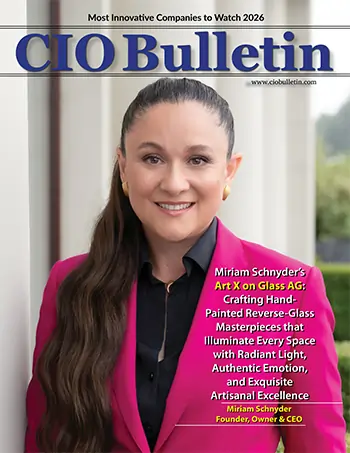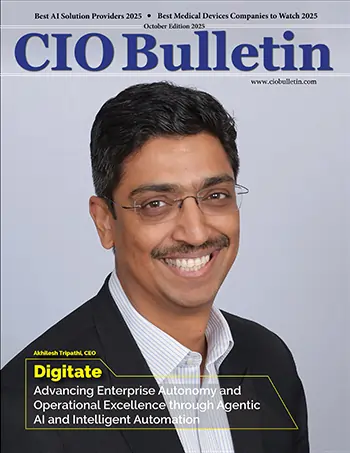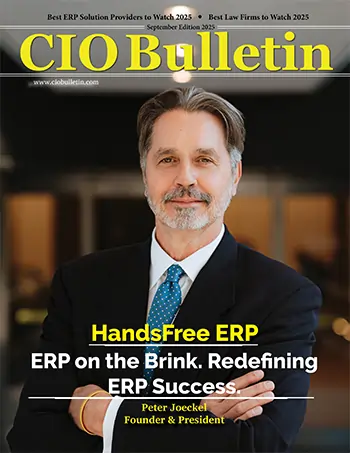50 Best Companies to Watch 2022
CIO Bulletin

Many businesses are implementing new innovations and technologies with several key objective of improving operational efficiency, enhancing customer experience, increasing productivity and profitability, and maintaining a competitive advantage in the marketplace. Many businesses are leveraging digital integration with their business applications via IoT (Internet of Things) and Artificial Intelligence in order to run a smarter and more efficient organization. There is a growing need to rapidly transfer information between business systems, which would otherwise remain siloed. Integrating a company’s ERP and CRM, for example, allows important data to flow, and gives your business the insight to meet customer demands more efficiently. This will improve business processes, and enhances the customer experience. The right digital integration tool can help you save time by providing access to all your business data in one place. With greater visibility and insights into your business operations, you are able to make faster and more informed decisions based on real-time data.
OpenLegacy helps various organizations quickly develop a composable enterprise by extending their core (legacy) systems to the web, mobile and cloud in days or weeks versus months. Their API software quickly reduces project backlog by automating and accelerating API creation, deployment, testing and management from core applications, mainframes and databases. Together, business and IT teams can quickly, easily and securely meet consumer, partner or employee demands for digital services without modernizing or replacing core systems, and without special programming skills or invasive changes to existing systems and architectures.
OpenLegacy (OL) Hub
To compete in a rapidly evolving landscape, enterprises must nimbly compose new digital experiences and offerings. But monolithic legacy systems that weren’t designed for the digital age are often a hurdle on the road to continuous innovation. OL Hub is built to bring the simplicity, speed, and standardization of cloud native development to enterprises with monolithic core systems. OL Hub is powered by the same patented API integration technology trusted by hundreds of global banks and insurers to create digital services from legacy systems.
Get the best out of your Core Systems without changing them. Manage services as Cloud-Native Applications or serverless functions. Generate technology agnostic digital services in days, quantum leap your DevOps strategy, and more importantly: embrace your industry’s integration standards in record time. Enterprises rely on OpenLegacy Hub to bridge the gap between digital innovation and core systems. With Hub, untangle core system data – and streamline your innovation strategy across digital and legacy architecture. Rapidly generate digital services into any format. No matter how you want to use the services, OpenLegacy has you covered. OL Hub supports deployment to all cloud, serverless, and on-premise environments.
Leveraging Best Cloud-Based Integration Services
Digital Innovation: Over the last few years, new digital-only banks have taken trillions of dollars in checking accounts, mortgages, and wealth management assets from traditional banks. This is when digital banking comes into the picture. Composability is the ability to rapidly assemble new products and customer experiences from cloud-native building blocks. OpenLegacy transforms the way banks innovate by finally making composable banking a reality. The company connects directly to core systems, automatically generates digital-ready code, and deploys as standard microservices or serverless functions. With OpenLegacy, banks can finally achieve the speed and resilience of the composable enterprise — harnessing legacy assets for continuous innovation.
API Integration: In order to survive, enterprises must be able to rapidly compose new offerings and customer experiences from existing technology – a challenge for organizations with monolithic core systems. OpenLegacy finally offers these enterprises the promise of true composability. OpenLegacy’s patented technology bypasses complex ESB/SOA middleware to connect directly with mainframes and midrange systems. And it exposes data from those systems as standard microservice- and serverless-based APIs that can be nimbly composed into new digital experiences. Say goodbye to your backlog. With Automatic Code Generation, you can quickly and effortlessly generate digital services from 50+ types of back-end systems. No special skills or changes to legacy systems required. With direct-to-legacy connections, you avoid complex layers of technology and dramatically boost API performance. Automatically generate a microservice as a self-contained standard Java component. It features a standard interface which deals with a small problem domain and has an SDK, which refers back to a business process or data on the legacy applications.
Microservices: A Microservice is a small, self-contained piece of code thar executes a business function. It has a clear interface, and private data. Microservices can be written in many different programming languages and is one component in a service-oriented architecture. A microservice is decoupled and easily deployable inside a container into any environment. Microservices are easy to continuously integrate, deploy and test - plus software teams can work on each one independent from another. Microservices support continuous delivery and service discovery in environments from serverless cloud computing to data centers. Create a microservice and an API automatically. OpenLegacy's platform creates APIs contained within microservices, with a built-in connection to the legacy systems. In one step, create a legacy API and expose business processes. OpenLegacy's architecture does not require any middleware such as ESB and MQ, shortening the development and maintenance cycle and leading to significant cost savings. The entire application also executes faster without middleware and ends the reliance on additional third-party software.
Romi Stein | Co-founder & CEO







